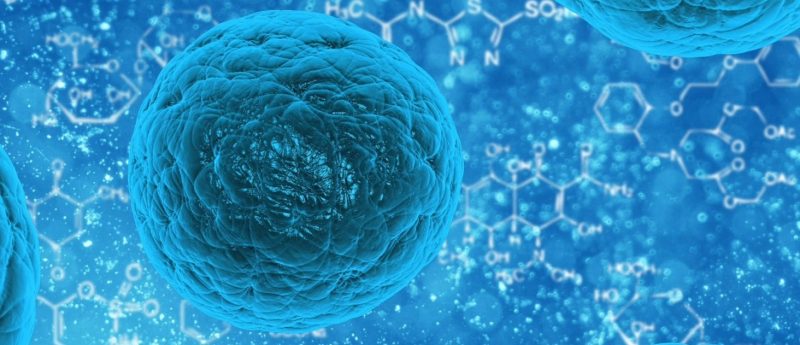Introducing a regenerative medicine stem cell fundamental needed by the pharmaceutical industry

It is a savvy drug company CEO who recognizes that ‘regenerative medicine’ includes making drugs, too. Not metaphorical ‘cell drugs’, but traditional small molecules and now biologics. This recognition requires an appreciation of the ‘stem cell fundamentals’ nature of regenerative medicine.
Some of the ramifications of regenerative medicine stem cell fundamentals (www.regmednet.com/users/5937-asymmetrex-llc/posts/4451-regmed-companies-developing-stem-cell-fundamentals) into drug discovery and development are more evident than others. More obvious examples involve the development of drugs that regulate the growth and development of tissue cells in situ or transplanted cells, in particular tissue stem cells, to achieve treatments for disease or repair of wounds and injuries. Similar pursuits of chemical and biologic agents to rejuvenate aging tissues or reduce the rate of aging have a basis in tissue stem cell fundamentals and meet the core principles of regenerative medicine
Asymmetrex has set itself to the important work of introducing and supporting a drug development ramification from regenerative medicine stem cell fundamentals that currently is not widely recognized by the pharmaceutical industry. This is the use of stem cell fundamentals to identify tissue stem cell-safe drugs earlier in the current drug evaluation pipeline.
Stem cell-toxic compounds are among the most hazardous drug candidates for clinical trial volunteers and patients. Toxicity to lineage-committed progenitor cells and mature tissue cells is compensated by the action of tissue stem cells to restore lost or damaged differentiating tissue cells. But toxicity to tissue stem cells, themselves, kills the ultimate agents of tissue restoration and repair, resulting most often in subchronic organ and tissue failure. Such failures cause severe injuries and death. In current drug development practice, tissue stem cell toxicity is not discovered until organ and tissue failure occurs in animal studies, clinical trials, and potentially post-marketing when a drug with chronic stem cell toxicity achieves a sufficient extent of exposure to reveal individuals with greater than average susceptibility.
Late discovery of tissue stem cell-toxicity is a large, but understated burden on the drug development industry. Failures during preclinical animal studies and clinical trials alone exact a significant cost from higher safety risks, slower drug development because or time and effort wasted on failed compounds, and the wasted cost of expensive animal and human subjects evaluations with drug candidates destined to fail.
About 20—30 percent of drug candidates that reach Phase II and Phase III clinical trials fail because of safety issues [1—3]. In two recent studies of the causes of these failures, target organ toxicity and failure accounted for nearly half [1,3]. With the high cost of drug development in the US, which is mostly spent on unsuccessful candidates, these stem cell toxicity failures are estimated to cost the industry $4—5 billion each year in failed animal studies and failed clinical trials. With a method to detect stem cell toxicity earlier, major drug developers would save hundreds of millions of dollars each year, increase safety, and accelerate their identification of effective new drugs, whether small molecules or biologics.
So, the question that Asymmetrex wishes to bring to the attention of pharmaceutical company CEOs is, “How much more money would they have available for successful drug discovery and development, if they could eliminate stem cell-toxic drug candidates well before costly animal studies and clinical trials?”
Asymmetrex has the answer to their question, “How can this be done?” The answer is, “Employ regenerative medicine stem cell fundamentals to devise a method to count tissue stem cells. If tissue stem cells can be counted, then it becomes straightforward to identify agents that affect their number, viability, and function.”
Asymmetrex has deployed the stem cell fundamental of asymmetric self-renewal to develop a first-in-class ‘AlphaSTEM’ technology for counting and monitoring the viability and function of human adult tissue stem cells for any human tissue that has the capacity for tissue cell renewal. The AlphaSTEM technology has been validated for human liver stem cells and CD34-selected human hematopoietic stem cells using test compounds known to be either stem cell-safe or stem cell-toxic. Visit here to learn more: http://asymmetrex.com/our-products/drug-development-regenerative-medicine.
At the close of 2015, Asymmetrex projected the following 7th and 8th advances in regenerative medicine in 2016, if the new AlphaSTEM technology were adopted by pharmaceutical companies (http://asymmetrex.com/9-Improvements-We-Could-See-in-2016-Thanks-to-Biotechnology):
7. Pharmaceutical companies would no longer lose hundreds of millions of dollars each year on drug candidates that fail in animal studies and clinical trials because of tissue stem cell toxicity.
8. Pharmaceutical companies would no longer have to acquire promising drug collections without the means to exclude drugs that will fail because of tissue stem cell toxicity.
2016 is still very young, and AlphaSTEM technology is now very ready.
References
- Horner S, Ryan D, Robinson S, Callander R, Stamp K, Roberts RA. Target organ toxicities in studies conducted to support first time in man dosing: an analysis across species and therapy areas. Regulat. Toxicol. Pharmacol. 65, 334—343 (2013).
- Tufts Center for the Study of Drug Development. Causes of clinical failures vary widely by therapeutic class, Phase of study. Impact Rep. 15, 1—4 (2013).
- Roberts RA, Kavanagh SL, Mellor HR, Pollard CE, Robinson S, Platz SJ. Reducing attrition in drug development: smart loading preclinical safety assessment. Drug Discov. Today 19, 341—347 (2014).
Interested in learning more? Check out the free webinar on counting adult tissue stem cells for applications in regenerative medicine and drug development.